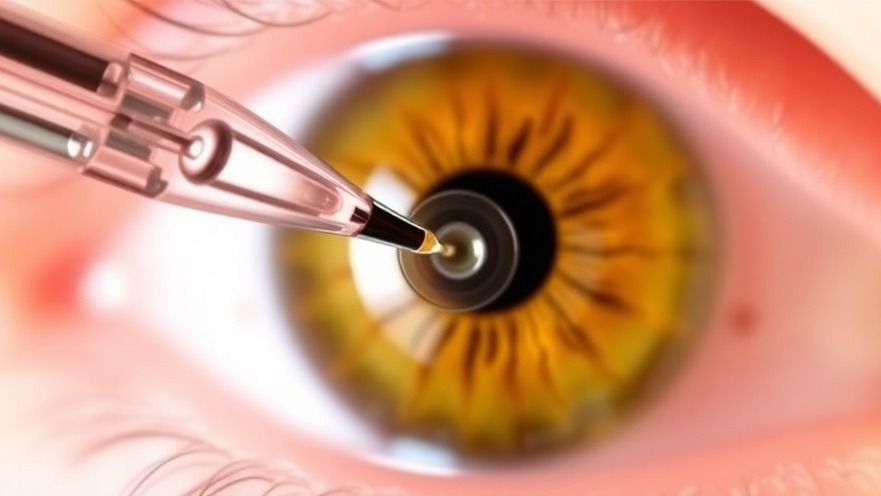
A Breakthrough in Retinal Repair: The Future of Eye Health
Recent advancements in ocular medicine have led to the development of a novel injectable hydrogel designed to address one of the more challenging conditions in ophthalmology—optic neuropathy and retinal injuries. This soft, biocompatible material has been engineered with careful consideration to promote healing and enhance patient outcomes.
Understanding the Hydrogel's Composition
The injectable hydrogel is primarily made from gelatin that has been modified with natural polyphenols. These modifications not only improve its antioxidative properties but also enhance its adhesion to the delicate tissues of the retina. The importance of creating a supportive microenvironment is clear; oxidative stress and inflammation are significant contributors to retinal degeneration, and this hydrogel effectively mitigates these factors.
How the Hydrogel Works
Upon injection, the hydrogel adheres to the inner retinal surface, providing stability and support to the existing tissue. Notably, in vivo studies have demonstrated the material’s safety and effectiveness in preserving retinal architecture while minimizing cellular damage. As a health practitioner, it’s critical to understand the potential this technology holds not just for immediate support but also for long-term retinal recovery.
Implications for Future Treatments
This innovative hydrogel offers a unique scaffold for stem cell delivery, opening new avenues for regenerative therapies in retinal health. Prof. Jiashing Yu emphasizes the potential of this material as a foundation for cell therapy, which could be a game-changer for conditions previously deemed incurable. This fusion of materials science and biology marks a substantial leap forward in our understanding of how to heal complex ocular injuries.
The Impact on Patient Care
As practitioners, being at the forefront of such medical advancements is essential. This injectable hydrogel could significantly improve patient outcomes for those suffering from optic neuropathies and retinal damage. The gentle nature of the hydrogel minimizes patient discomfort and ensures that the tissue receives the necessary support to heal effectively.
Real-World Application: What Patients Can Expect
Concierge health practitioners who keep abreast of these developments can better inform their patients about available treatments that significantly impact recovery. As this hydrogel prepares to enter clinical practice, practitioners will need to educate their patients about the benefits along with any potential risks associated with this new technology. As per the latest study published in Advanced Healthcare Materials, the hope is that this new treatment modality can greatly benefit individuals suffering from debilitating eye conditions.
Staying Ahead of the Curve
For health practitioners, the introduction of this injectable hydrogel presents an opportunity not only to enhance treatment regimens but also to improve the overall patient experience. Keeping updated with such medical advancements will empower practitioners to make informed decisions, ensuring they facilitate cutting-edge care and patient satisfaction.
Call for Action
As new treatment modalities emerge in the field of ocular therapy, practitioners should engage with continuous learning opportunities surrounding these innovations. Educating your patients on the latest developments can significantly enhance their trust and satisfaction, making them feel at the forefront of their health journey. Keep exploring, keep learning, and ensure that your patients are informed about the best options available in their care.
 Add Row
Add Row  Add
Add 






Write A Comment